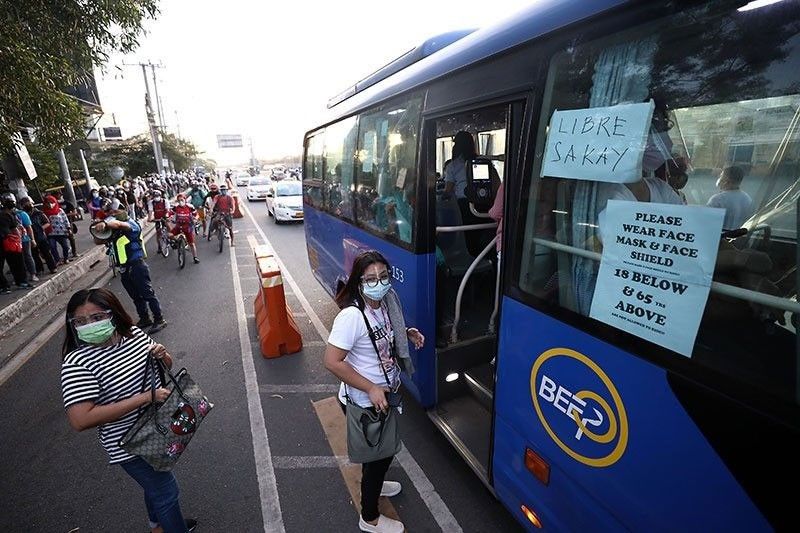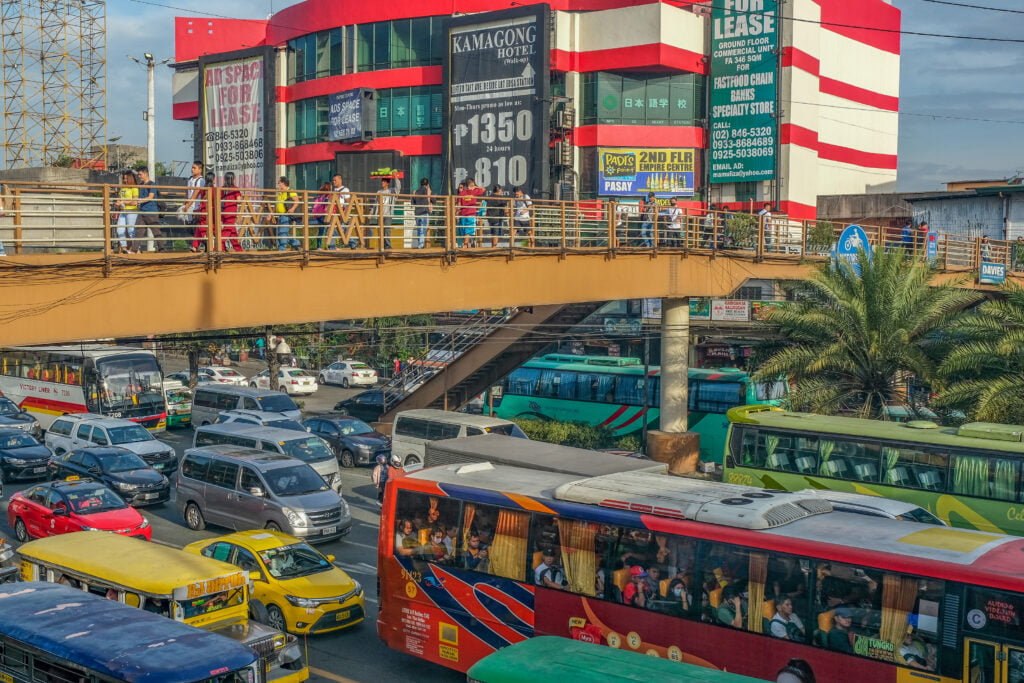Why Select Transit Advertising Philippines for Your Brand name
Why Select Transit Advertising Philippines for Your Brand name
Blog Article
Recognizing the Role of Transit Marketing in Enhancing Brand Presence and Customer Interaction
Transportation advertising has become a critical component in the advertising and marketing landscape, providing distinct possibilities for brand names to elevate their exposure and engage consumers efficiently. With the ability to get to a varied and captive target market throughout their day-to-day commutes, these marketing strategies are not just about exposure; they are regarding producing significant connections with prospective clients. As we explore the multifaceted benefits and innovative approaches within transportation marketing, it comes to be important to take into consideration just how these aspects collectively affect consumer assumption and actions, questioning regarding their long-term influence on brand name loyalty.
Interpretation of Transit Advertising And Marketing
Transportation advertising describes the method of advertising products, services, or brands with promotions placed in and around mass transit systems. This type of advertising and marketing encompasses a range of positionings, including posters on buses and trains, digital screens at transportation terminals, and covers on the outside of lorries. It aims to reach a diverse target market, maximizing the high foot website traffic related to public transit.
Transportation marketing is strategically placed to record the focus of travelers, who often spend substantial time waiting or traveling. By incorporating ads right into the everyday routines of people, brands can develop a lasting perception and foster brand name acknowledgment. The medium is specifically efficient in urban environments, where public transport is a primary setting of traveling.
In addition, transit marketing can help with local targeting, allowing organizations to reach certain demographics based on transit paths and station places. As metropolitan populaces grow and making use of public transportation increases, this marketing approach has actually acquired importance as a vital component of incorporated advertising methods. The vibrant nature of transit advertising and marketing, integrated with its capacity to engage customers in a restricted environment, underscores its relevance in modern advertising methods.
Advantages of Transportation Advertising And Marketing
The efficiency of transit advertising and marketing hinges on its capacity to supply a wide range of benefits to brand names seeking to boost exposure and engagement. One of the key advantages is the comprehensive reach it supplies; transportation ads can properly target diverse demographics throughout city areas, getting to both pedestrians and travelers alike. This wide exposure significantly boosts brand name recognition.
Another advantage is the high frequency of impacts. As transit cars follow well established courses and quit at multiple places, they develop recurring exposure that enhances brand messages. This frequency promotes experience, which is vital in consumer decision-making.
Transit advertising and marketing is likewise affordable compared to other media platforms. Offered its large reach and capacity for high perceptions, brand names commonly experience a lower price per thousand perceptions (CPM), maximizing their advertising spending plan.
Furthermore, transportation advertisements can develop a feeling of community link. By aligning with local transit systems, brand names can resonate with local audiences and promote a feeling of local satisfaction. This local approach enhances brand name commitment and involvement, making transit advertising an engaging choice for businesses intending to strengthen their presence out there.

Effective Methods for Transit Campaigns
To maximize the influence of transit projects, brand names should utilize strategic planning and execution customized to their target market. Initially, identifying the market qualities of the target market utilizing public transportation is crucial. This permits like it brands to produce personalized messaging that resonates with possible clients.
Following, selecting the ideal transit tools is vital. Whether using bus covers, subway posters, or digital displays, each medium has distinct advantages that can improve presence. For circumstances, dynamic visuals on bus covers can attract interest, while electronic ads can be upgraded regularly to reflect prompt promos.
Additionally, integrating a cohesive branding approach throughout transportation platforms guarantees uniformity and strengthens the brand's identification. Making use of appealing styles and unforgettable taglines will reinforce brand recall among travelers.
By utilizing these approaches, brand names can properly harness the possibility of transportation advertising and marketing, fostering higher awareness and link with their target audience. Eventually, a well-executed transit project can drive substantial growth in brand name presence and customer interaction.

Gauging Influence and Involvement
In assessing the effectiveness of transportation marketing campaign, accurate measurement of influence and interaction is necessary for brand names looking for to optimize their marketing approaches. Metrics such as reach, frequency, and impressions supply fundamental information to analyze visibility. Evaluating these elements assists figure out how numerous potential customers are subjected to the advertisements throughout their day-to-day commutes.
Involvement can be further determined via customer communications, such as site traffic, social media discusses, and direct feedbacks to calls-to-action included in the advertisements. Making use of tools like QR codes or one-of-a-kind Links can assist in tracking of consumer habits straight linked to transit projects. Surveys and comments systems additionally work as important techniques to collect qualitative data on consumer perceptions and recall of the ad.
Moreover, progressed analytics and acknowledgment versions can correlate transit exposure with succeeding buying habits, supplying understandings into the roi. By utilizing an extensive method that integrates quantitative and qualitative steps, brands can create a nuanced understanding of their transit advertising and marketing effect. Ultimately, this data-driven method enables brands to fine-tune their campaigns, guaranteeing they resonate efficiently with target audiences and boost general brand name exposure.
Study of Effective Projects
Effective transportation ad campaign act as engaging examples click reference of how effective strategies can elevate brand visibility and interaction. Transit Advertising Philippines. One significant situation is the "I Love New york city" project, which transformed the city's image and attracted countless vacationers. By using train ads, billboards, and bus wraps, the project developed a solid, natural brand name identification, resulting in a significant uptick in tourism and local service patronage
One more exemplary campaign is Coca-Cola's "Share a Coke" effort, which leveraged transit advertising to personalize the brand name experience. By featuring popular names on promotional materials throughout various transit systems, Coca-Cola fostered a much deeper psychological connection with consumers, motivating them to share their experiences on social media sites.
In addition, the "Got Milk?" project successfully utilized public transport ads to get to a broad audience, strengthening the message of the importance of milk in a balanced diet regimen. The project saw a quantifiable boost in milk intake in target demographics.
These study highlight that when carried out thoughtfully, transit advertising and marketing can substantially improve brand visibility, foster customer interaction, and drive measurable results, showing its crucial role moved here in contemporary marketing approaches. - Transit Advertising Philippines
Final Thought
To conclude, transportation marketing acts as an important device for enhancing brand name visibility and cultivating customer interaction. By utilizing purposefully positioned ads within mass transit systems, brands can successfully strengthen and get to varied target markets acknowledgment through regular direct exposure. The implementation of targeted messaging and innovative methods better intensifies the impact of transportation campaigns. Ultimately, the capability to determine interaction and assess effective case researches underscores the performance of transit advertising and marketing in driving brand name loyalty and customer interactions.
Transportation advertising has arised as a crucial element in the marketing landscape, offering distinct chances for brands to boost their exposure and involve customers efficiently.Furthermore, transportation advertising and marketing can facilitate local targeting, enabling companies to get to certain demographics based on transportation routes and terminal locations.In reviewing the effectiveness of transportation advertising and marketing projects, exact measurement of impact and engagement is vital for brand names seeking to maximize their advertising methods.Successful transportation marketing projects serve as engaging instances of exactly how efficient techniques can raise brand name presence and involvement.In conclusion, transit advertising and marketing serves as a crucial device for boosting brand visibility and promoting consumer involvement.
Report this page